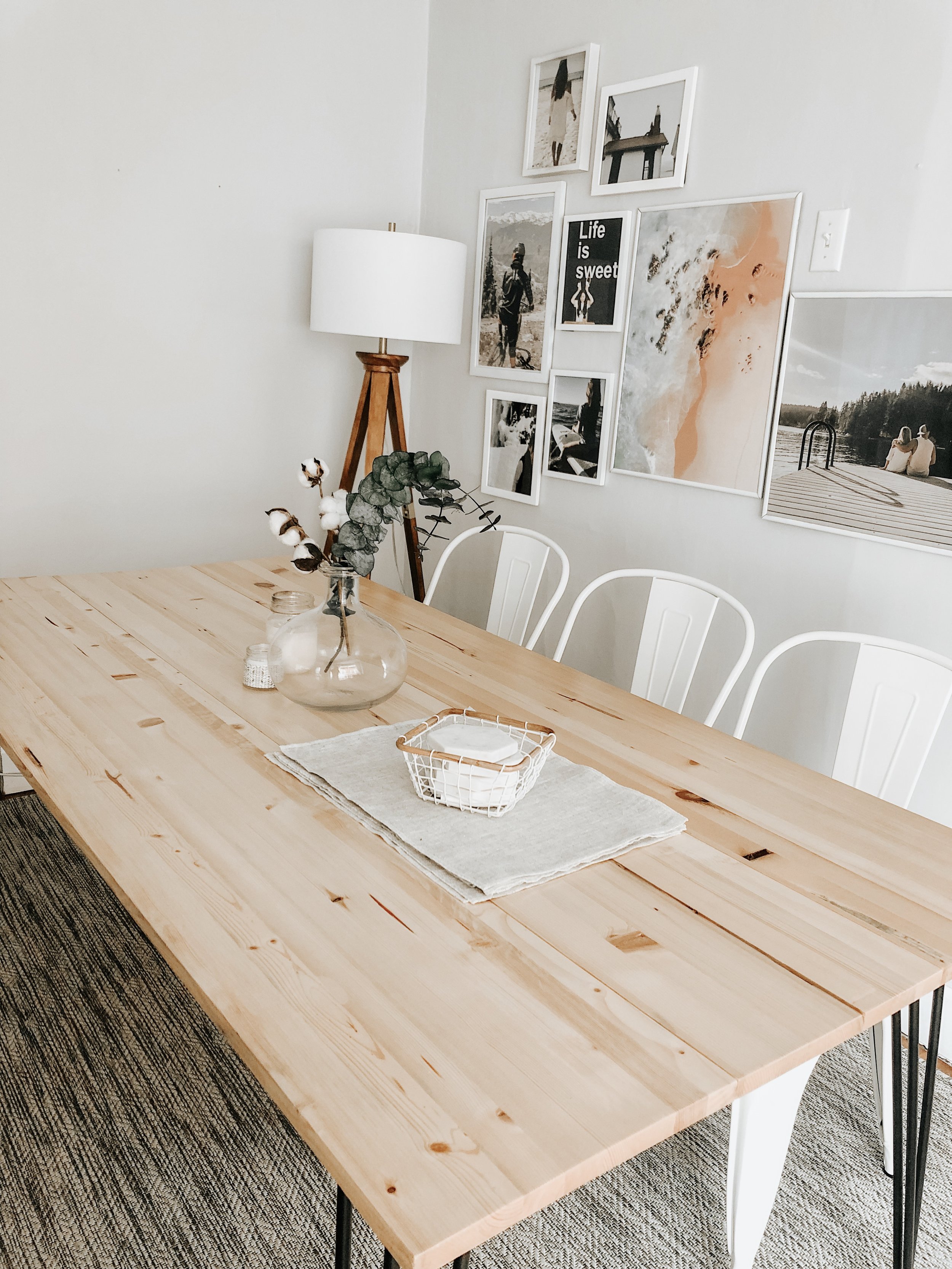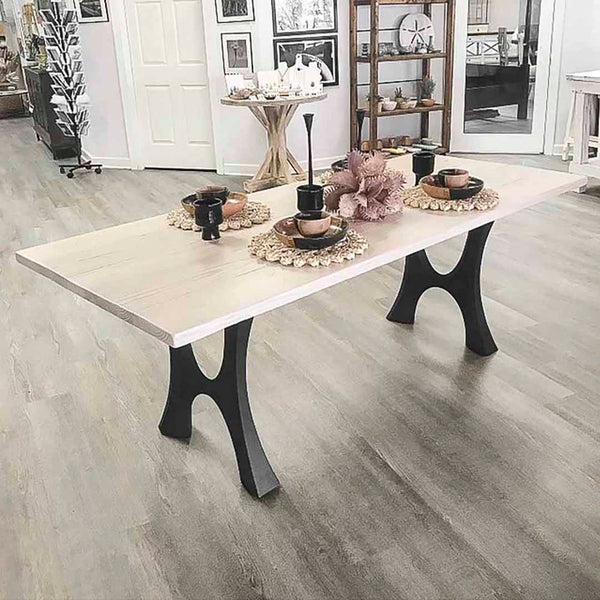The Best Materials for Durable and Elegant Dining Room Table Legs
The Best Materials for Durable and Elegant Dining Room Table Legs
Blog Article
From Traditional to Modern: Locate the Ideal Eating Space Table Legs for Your Style
The selection of dining room table legs plays an essential function in defining the total character of your space, connecting the space in between standard workmanship and contemporary appearances. While traditional layouts such as cabriole and turned legs evoke a feeling of timeless elegance, contemporary designs like hairpin and geometric options present a chance for striking visual rate of interest. Reviewing the right balance between these styles requires a nuanced understanding of your existing decor and individual taste. As you consider these elements, the inquiry remains: just how can you perfectly integrate these diverse leg styles to develop a harmonious eating experience?
Recognizing Table Leg Styles
The selection of dining-room table leg designs can dramatically influence both the appearances and capability of the area. Each leg style adds one-of-a-kind sensible features and aesthetic aspects, dealing with varied style preferences and usage demands. Comprehending these styles is essential for selecting the right eating table that straightens with your total interior style vision.
For instance, tapered legs supply a tidy, classic appearance that can improve a space's style, while stand bases give security and make the most of legroom, making them perfect for smaller sized rooms. Hairpin legs, a characteristic of mid-century modern style, introduce an industrial style, permitting for an airy, open feeling. Trestle legs evoke rustic appeal, offering robust support and a sense of eternity.
Furthermore, the selection of materials plays a considerable function. Wood legs can bring heat and texture, whereas metal alternatives commonly convey a smooth, contemporary vibe. Ultimately, comprehending table leg styles is important for developing a natural eating location that mirrors personal design while ensuring usefulness and comfort. By thoughtfully thinking about these components, you can improve both the practical and visual charm of your dining room.
Traditional Table Leg Options
When picking eating room table legs, traditional choices often symbolize classic sophistication and craftsmanship. These styles show a rich heritage and a dedication to quality, making them perfect for those who value classic looks.
Among one of the most iconic conventional leg designs is the cabriole leg, defined by its graceful bent form. This style commonly includes decorative carvings and is most frequently found in Queen Anne and Chippendale furniture. One more preferred option is the transformed leg, which flaunts a collection of smooth, rounded shapes that give a traditional look while preserving security.
Furthermore, the straight leg, while simple, supplies a strong and unadorned structure that can blend seamlessly with a selection of tabletop styles. For those attracted to ornate describing, claw-and-ball feet legs stimulate a sense of grandeur and can function as a stunning prime focus in any type of eating room.
Lastly, stand bases, although not purely legs, provide a different standard option that enables adequate legroom and can be magnificently carved. Each of these typical leg styles adds to the overall atmosphere of a dining-room, weding function with visual charm.

Modern Table Leg Styles
Modern table leg layouts use a diverse variety of styles that highlight tidy lines and innovative products. These layouts usually prioritize functionality while serving as striking focal factors within a dining space. Minimal aesthetics are widespread, with legs crafted from products such as metal, glass, and engineered timber, which add to my response a contemporary and airy feeling.
One prominent layout is the barrette leg, identified by its slim, conical structure that offers security without overwhelming the tabletop (dining room table legs). This design is commonly found in mid-century modern furnishings and can easily enhance various eating table forms. An additional fad is the use of geometric shapes, where legs might tackle asymmetrical or angular kinds, adding visual rate of interest and a touch of artistry

Blending Designs for Distinct Rooms
Typically, house owners look for to develop one-of-a-kind dining rooms that mirror their personal style by mixing different design aspects. This strategy enables the consolidation of diverse aesthetic appeals, leading to an unified yet distinctive environment. For example, matching a rustic wood table with smooth, modern-day metal legs can develop an eye-catching comparison that raises the area's general charm.
Additionally, incorporating vintage table legs with contemporary table tops can evoke a feeling of background while maintaining a modern sensibility. Such combinations not only display individual taste however also urge imagination, enabling homeowners to curate a room that really feels both personal and inviting.
Shade plays a vital role in this mixing procedure; picking table legs that complement or contrast with the existing shade scheme can enhance aesthetic passion. For example, whitewashed legs can soften the boldness of a dark table surface, creating a well balanced visual.
Tips for Picking the Right Legs
Choosing the right table legs is important for accomplishing both performance and visual allure in your dining space. Begin by taking into consideration the general style of your space. Standard setups gain from legs that feature complex makings or transformed layouts, while contemporary spaces may ask for streamlined, minimal designs.
Next, assess the height and security of the legs. dining room table legs. Basic table vary in between 28 to 30 inches in height, so ensure the legs complement this measurement for convenience. Additionally, robust products, such as wood or steel, can boost stability and longevity
Assess the address leg shape as well-- alternatives consist of straight, tapered, or stand layouts. Straight legs offer a timeless appearance, while tapered legs can add a touch of beauty. Pedestal bases supply adequate legroom and index are optimal for smaller spaces.
Conclusion
In summary, choosing the perfect dining-room table legs needs careful factor to consider of both standard and modern-day styles. Traditional alternatives such as cabriole and transformed legs use classic style, while contemporary styles like hairpin and geometric shapes supply a modern touch. By balancing leg design, height, and material with the overall design, a natural and welcoming ambience can be accomplished. Ultimately, the chosen table legs ought to mirror the desired aesthetic, improving the eating experience within the space.
The range of eating room table leg styles can dramatically influence both the visual appeals and capability of the space. Inevitably, recognizing table leg styles is necessary for developing a cohesive eating location that shows individual design while making sure practicality and convenience.One of the most famous standard leg styles is the cabriole leg, characterized by its stylish bent shape. Straight legs provide a traditional appearance, while conical legs can include a touch of sophistication.In recap, picking the ideal dining room table legs needs careful consideration of both contemporary and standard styles.
Report this page